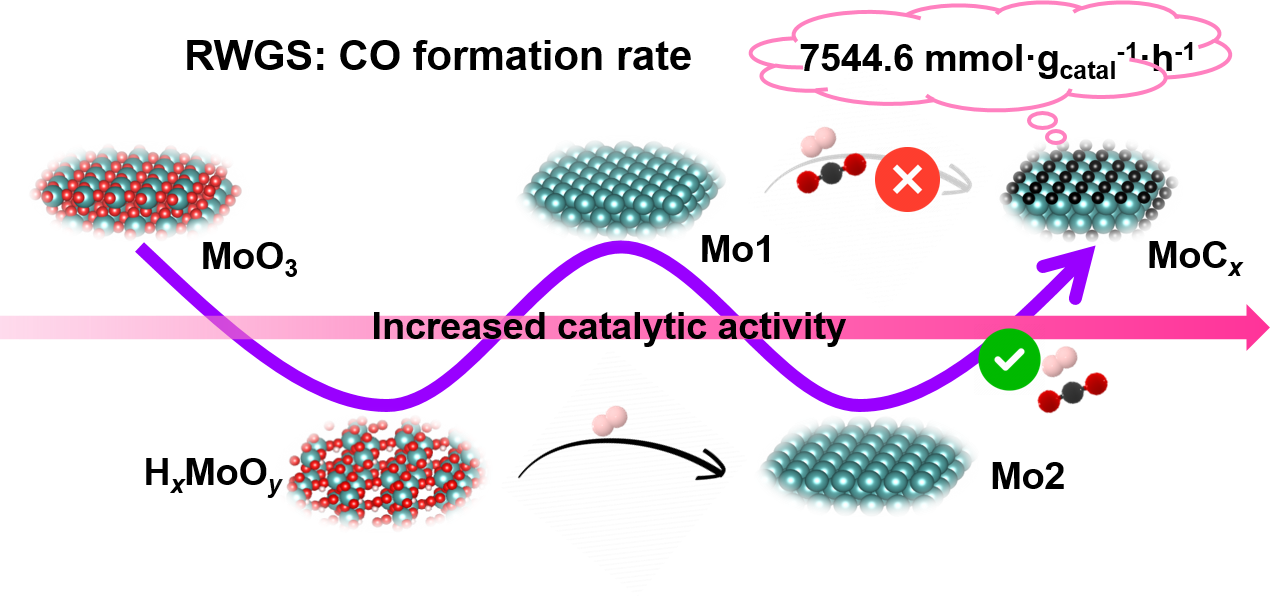The synthesis of molybdenum carbide catalysts typically requires high temperature, leading to inevitable passivation in an oxygen-containing atmosphere. Developing a new route to produce molybdenum carbide at low temperatures is challenging but essential to increase the density of surface active sites.
Recently, a research group led by Prof. BAO Xinhe and Prof. FU Qiang from the Dalian Institute of Chemical Physics (DICP) of the Chinese Academy of Sciences (CAS) revealed an in-situ dynamic carbonization method to synthesize molybdenum carbide in reverse water-gas shift (RWGS) reaction. This study was published in Angewandte Chemie International Edition.

In-situ carbonization process of the Mo-based catalyst during RWGS reaction for unprecedented high CO formation (Image by DU xiangze)
The researchers discovered that introducing intercalated hydrogen into MoO3 to form HxMoOy promoted its reduction, enabling in-situ carburization at 500 ℃ during the RWGS reaction. This carbonization process produced highly active molybdenum carbide, which exhibited enhanced activity in the RWGS reaction.
The researchers indicated that both the surface properties of the catalysts and the reaction microenvironment affected the carbonization process. Specifically, a low O/Mo ratio of the catalyst was more favorable to carbonization, while a high CO2 conversion rate, or a high CO partial pressure, further enhanced the carbonization process.
Moreover, the researchers demonstrated that carbonization significantly improved CO2 adsorption and activation, thereby enhancing the activity of the RWGS reaction. This in-situ carburization strategy provided insights into the synthesis of metal carbides in a carbon-containing reaction atmosphere.
"The structural evolution of the catalyst plays an important role during the reaction, which can be used to enhance the catalytic performance by the rational control strategy," said Prof. FU.
This work was supported by the National Key R&D Program of China, the National Natural Science Foundation of China, and the Photon Science Center for Carbon Neutrality.